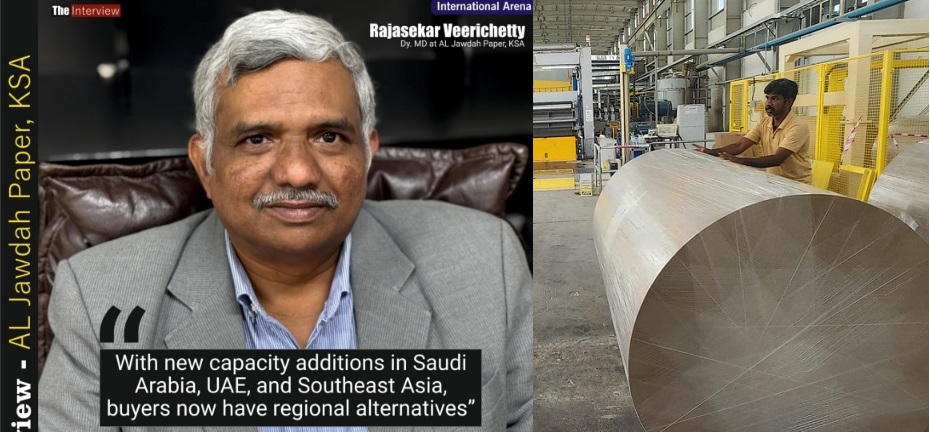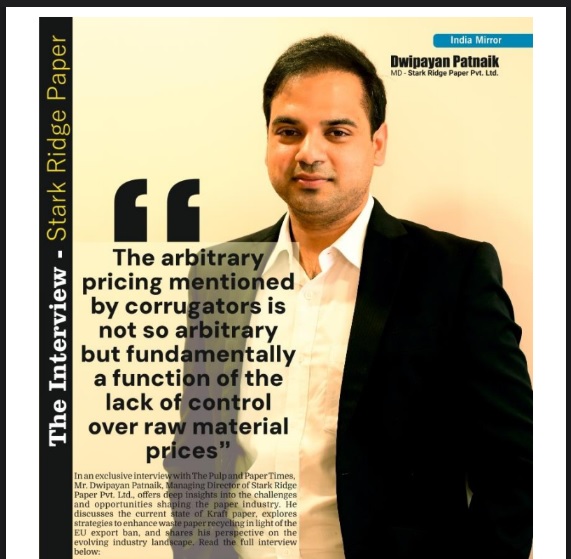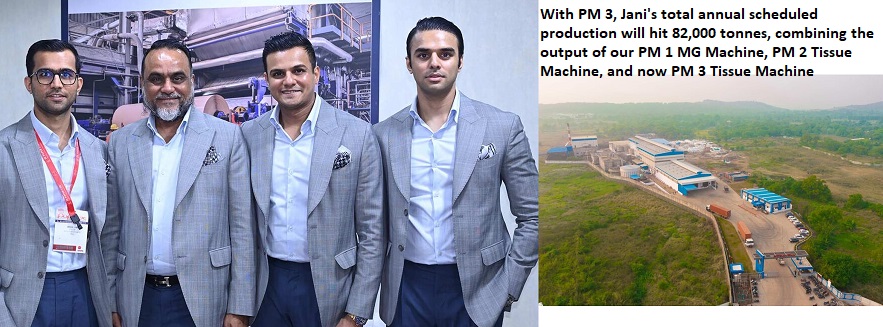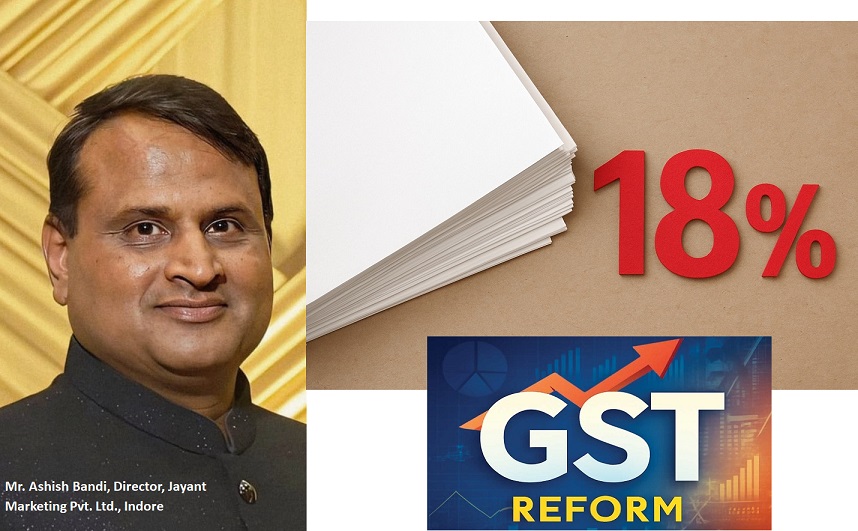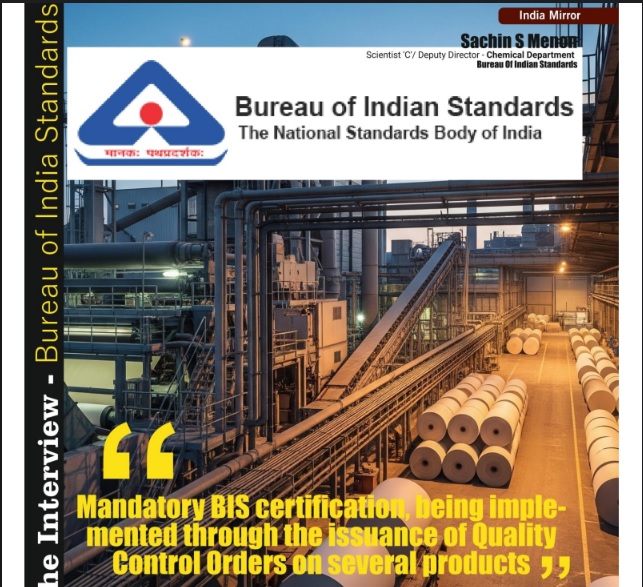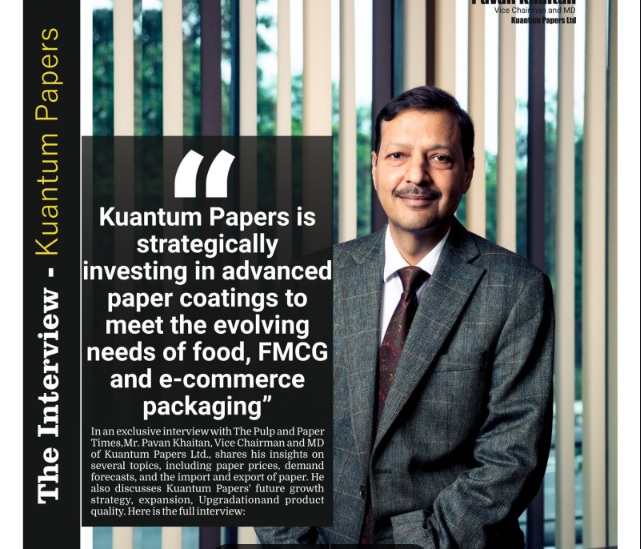Export Decline: Chinese Demand for paper from OCC-11 pulping is tainted as paper mills Incorporate Indian waste paper, newsprint and short fiber, says Pankajj Agarwal

Export Decline: Chinese Demand for paper from OCC-11 pulping is tainted as paper mills Incorporate Indian waste paper, newsprint and short fiber, says Pankajj Agarwal
- Mills facing cash losses, shifting to PNG impossible, says Mr Pankaj Aggrwal
- There is ample production in West India, many mills have been set up in Morbi, and they are selling paper here”
In an exclusive conversation During Paperex 2023 with The Pulp and Paper Times, Mr. Pankajj Agarwal, Managing Director of Bindlas Duplex Ltd, delves into the intricate challenges and opportunities within the paper industry. Shedding light on the current scenario of Kraft and Duplex paper, Mr. Agarwal shares his invaluable insights into the nuanced landscape of the industry.
The comprehensive interview not only explores the multifaceted aspects of Kraft and Duplex paper but also provides a detailed analysis of the problems encountered by the Indian paper sector. Mr. Agarwal, a seasoned expert in the field, offers a unique perspective on the issues affecting the industry, bringing forth a wealth of knowledge and experience.
Q: What are your views on the market scenario for Kraft and Duplex paper?
Currently, the market scenario is worse. The demand for packaging paper, whether Kraft or Duplex, is low, and the mills are running on cash losses. In the future, we can assume that it will be better, but currently, it has been worse for the last one and a half years.
Q: What, according to you, are the reasons for markets poor performance?
In my opinion, the demand for Kraft paper is low, and this is due to various reasons, such as low buying capacity. Also, the sales are low, resulting in no demand for packaging paper. For duplex paper, production is high; there is ample production in West India, many mills have been set up in Morbi, and they are selling paper here, which is a problem. Due to this, the demand is low.
Q:The government has introduced new sectors for Kraft paper, banned single-use plastics, and introduced paper in food segments. Then why is demand still low?
The government has published the notifications, but their implementation at the ground level is still negligible. Franchise companies such as McDonald's and Haldiram are following it. But 98% of the companies, shop owners, and street vendors still use plastic bags, which are banned.
Q: How are you managing the imported waste paper price fluctuation?
There are continuous ups and downs in waste paper prices. We could not manage it. And that is why we are making losses. Individual mills are trying to manage it by reducing production because there are no sales. However, mills are facing cash losses.
Q: How do you look at overcapacity? What is the solution so that existing plants do not have a problem?
Many people talk about overcapacity, but according to me, except for one or two things, there is no overcapacity. For example, in Kraft paper, in the last 5–6 years, there has been no increase in production. There is a problem due to less demand. Nowadays, there is a lot of online marketing. Which requires more packaging, so I think the buying capacity has reduced.
Q: Recently, the exports have been down. What do you see? Will the trend continue?
Indian mills exported a lot of paper when the exports rose. Indian manufacturers are not serious about producing good-quality paper. When they got to export to China, people started sending paper with a high ash content. Chinese demand for paper from OCC-11 pulping for repulping purposes is tainted as individuals (Paper Mills) opt to incorporate Indian waste paper, newsprint, and short fiber paper.. As a result, they are not importing from India anymore and have reduced their demand. I have spoken to many people, and they mentioned they are importing from Malaysia and the US. Also, many Chinese paper mills have taken over mills in Canada and the US and installed mills in Vietnam. They have set their priority there and are not interested in Indian papers. It is my assumption.
Q: Chinese companies are setting up mills in Vietnam, Malaysia, and Europe with increased capacity. These mills will, in turn, consume more of the imported waste paper, resulting in a further decline in the availability of long fiber and OCC in India. In this condition, the quality will also decline in India. How will we export work in India?
I don’t think we could succeed in exporting. Our infrastructure is not that great. Even our industrialists, except a few, are not serious about exports. On the other hand, the Indian market is huge; even today, there are many qualities that we can manufacture, but we are importing them. We are manufacturing a small quantity of Kraft, but the quality is not good. Some of it is used here, and the rest is imported. We have to improve our quality and make it a world standard.
Q: Can one Indian paper mill collectively set up an indigenous fiber products plant to reduce foreign dependency?
In India today, there is a production of 34 million tons, of which 18% is agro-based and wood-based. The remaining 82% is produced from recycled waste paper, of which nine million tons we import from foreign countries. We do not have virgin fiber. The fiber we possess is not of good quality. It is either agro-based or wood-based. And we also don’t have long fiber. So either we have to import secondary fiber or the government has to encourage these bagasse-based and wood-based mills. Everyone thinks that paper mills are cutting down trees and creating pollution. But, in reality, it is not. The production is all agro-based or wood-based, which is already environment-friendly. We also possess newer technology that does not harm the environment. So the government needs to encourage this technology through which we can control fiber here itself. There is no reason for India that we cannot export to any other country.
Q: Then, how will you compete with these international units’ cost-wise?
Papers are of many types. As I mentioned earlier, India has a lot of bagass and bagass-based paper. Earlier, bagass was used to manufacture Kraft paper, and even white paper can be manufactured using bagass, if the government encourages this, then India can export even white paper. Bagass-based cutlery is exported heavily, and it has unending demand. We can supply it across the globe. Other countries are preferring India over China. We have to increase its production.
Q: What are your expectations from the government?
The farmers are getting income directly from the government into their bank accounts. Similarly, the government should sit with the paper industry and discuss where they could take the industry. The agro-waste from farms can be utilized for paper manufacturing. We should work to make India a paper hub and export paper. It is possible to achieve this in bagass cutlery and bagass-based white paper.
Web Title: Export Decline: Chinese Demand for paper from OCC-11 pulping is tainted as paper mills Incorporate Indian waste paper, newsprint and short fiber, says Pankajj Agarwal




 Join WhatsApp Group
Join WhatsApp Group Join Telegram Channel
Join Telegram Channel Join YouTube Channel
Join YouTube Channel Join Job Channel (View | Submit Jobs)
Join Job Channel (View | Submit Jobs) Join Buy Sell Channel (Free to Submit)
Join Buy Sell Channel (Free to Submit) Paper News Headlines Channel (Free to read)
Paper News Headlines Channel (Free to read)



